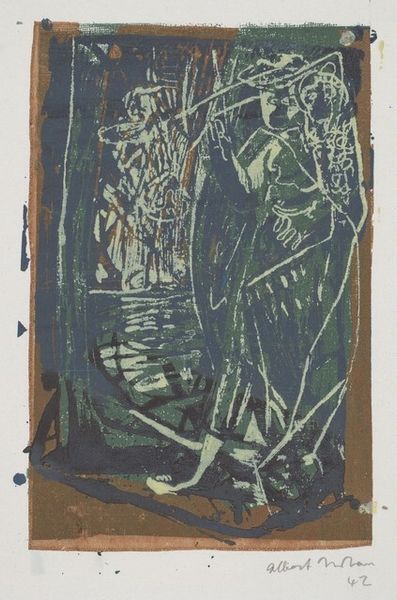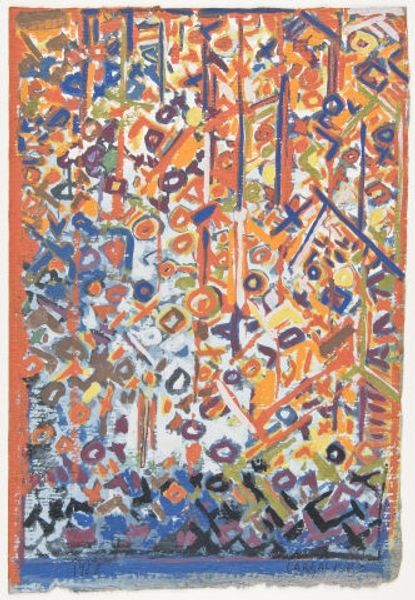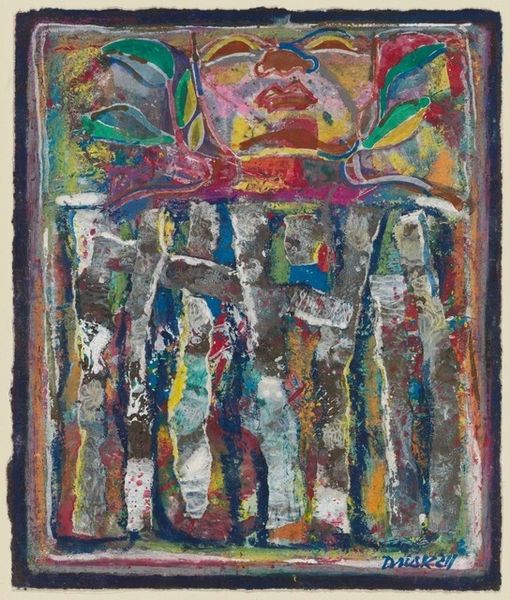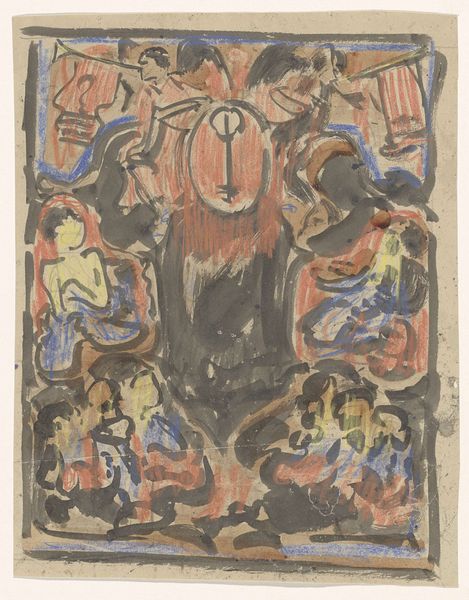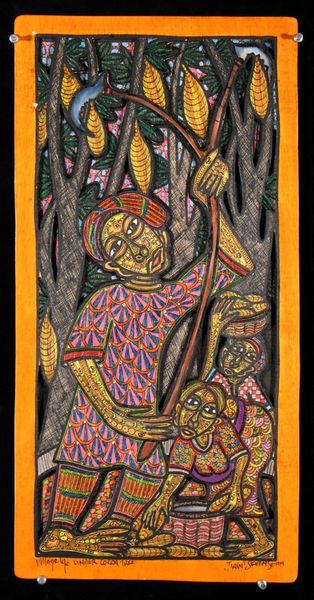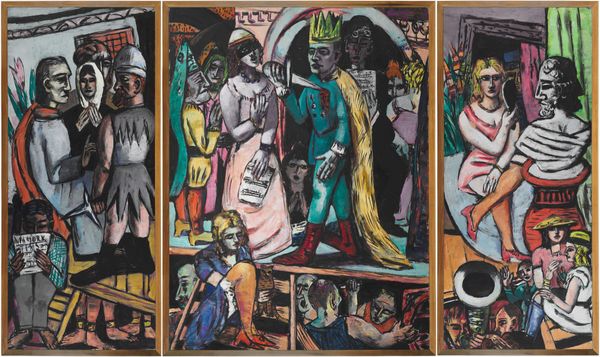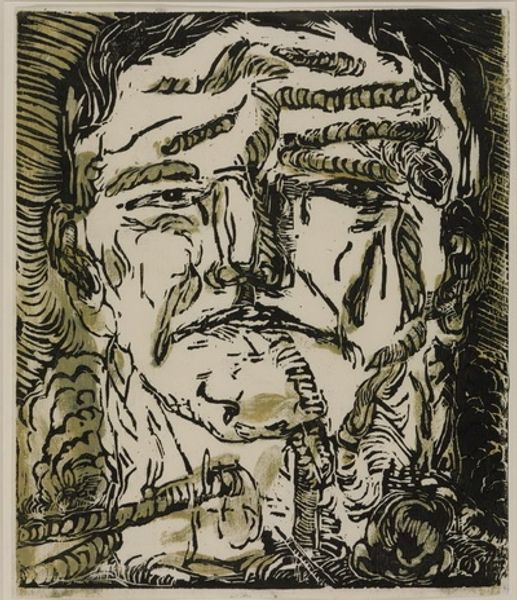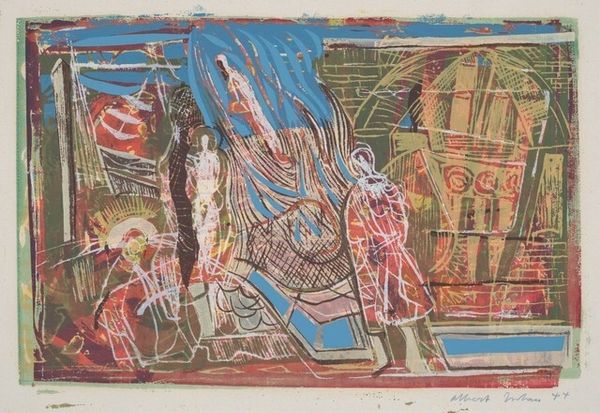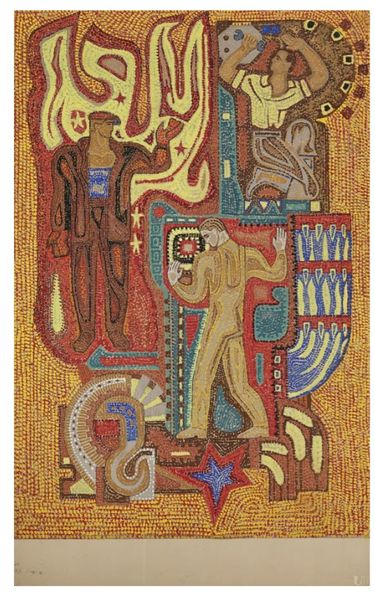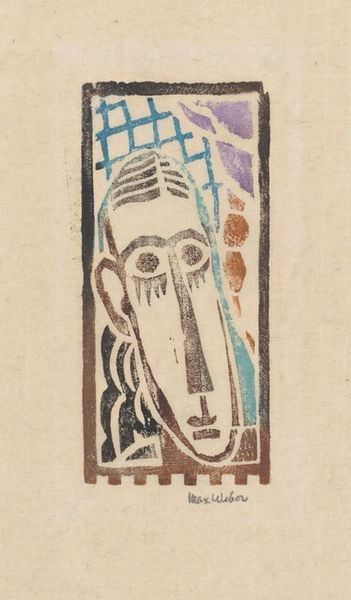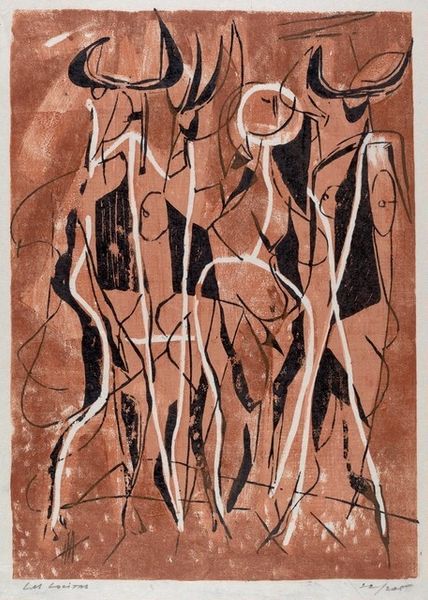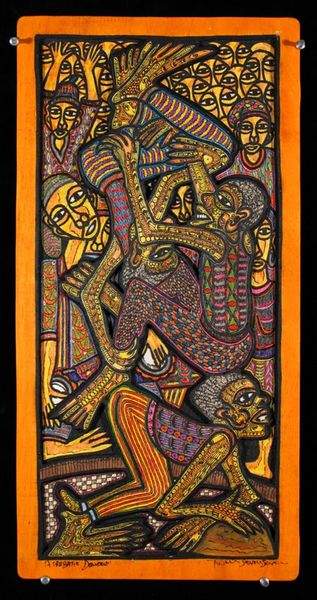
mixed-media, painting, print
#
mixed-media
#
abstract painting
#
painting
# print
#
figuration
#
modernism
Copyright: National Gallery of Art: CC0 1.0
Curator: Well, hello there. What are your first thoughts looking at this bold, multi-layered print? Editor: It feels like a Byzantine icon, but exploded! The color palette is striking, a very modern take on something so traditionally…regal. Curator: It’s a fascinating piece, isn’t it? This is Corita Kent’s “The Lord Is With Thee,” created in 1952. Kent was a Catholic nun, and her art became a significant voice in the Pop Art movement and for social justice. The listed materials are mixed-media print on paper. To me, that means she was constantly playing with what could carry meaning. Editor: I see how Kent positions religious iconography within broader social and political conversations, it is no wonder why this piece is a conversation starter. Can you talk a little more about the printing process itself? It looks incredibly layered and tactile. Curator: Absolutely! Kent embraced the silkscreen printing process, which was still developing then, elevating it to a powerful art form. She was all about process as metaphor for the everyday, the repeated gestures that give shape to communal and personal experience. Notice how the various layers create depth but also how some seem deliberately misaligned. Editor: I do notice! Almost like palimpsests that let earlier meanings still seep through the overprinting of layers. Thinking about Kent's socio-political perspective and its intersectionality to social work, how might these visible decisions in this artwork serve as a testament to Kent’s spiritual conviction? Curator: Precisely! Think about silkscreen—the open mesh forcing the ink through with pressure. It suggests to me how Corita believed the Gospel itself, that divine “ink” was meant to flow through everyone—including her, into tangible social actions. So she really brought that radical religious spirit into artistic, institutional practices. Editor: The piece feels surprisingly vibrant considering its age. There's an incredible dynamism, even in a subject so associated with tradition and reverence. Ultimately it feels less about adoration, and more about, let’s say... activation of spirit. Curator: I completely agree. Corita was about questioning norms, both religious and artistic, which makes “The Lord Is With Thee” a powerful artifact of its time, and perhaps our time too. Editor: So beautifully stated, considering the different ways Kent was not only activating social causes, but also, elevating them in cultural and artistic spaces.
Comments
No comments
Be the first to comment and join the conversation on the ultimate creative platform.
